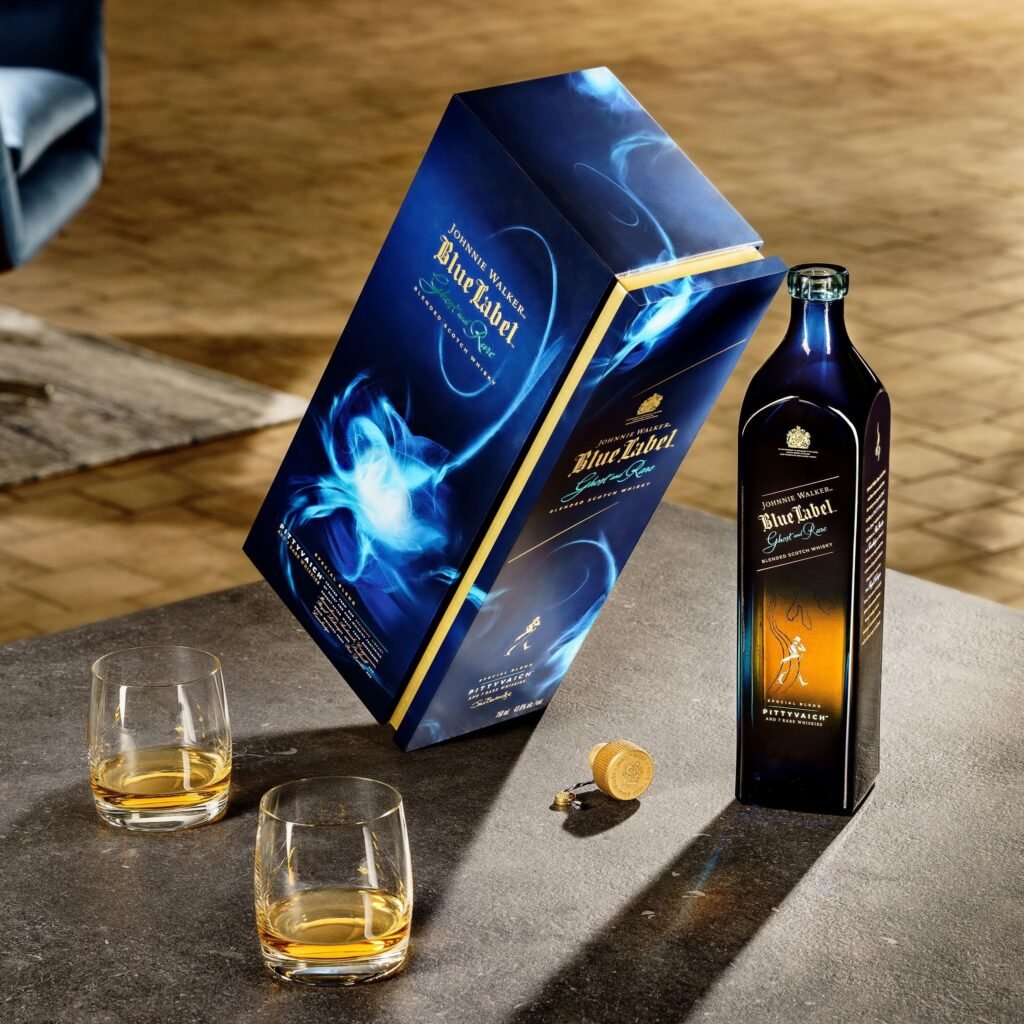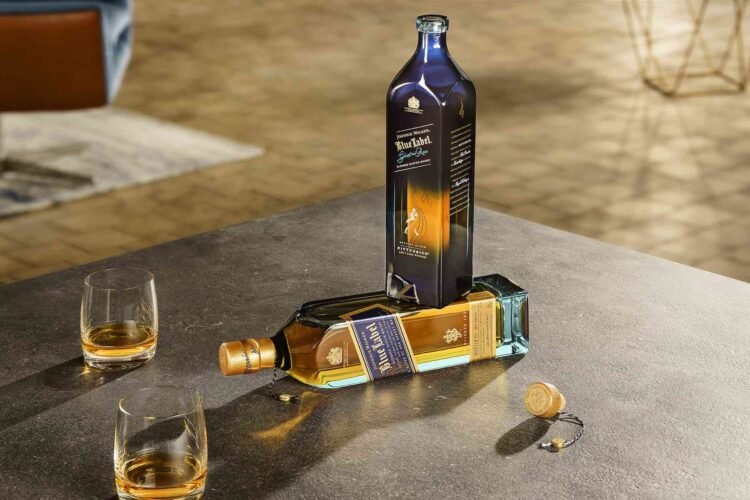Introduction: The Complexity and Charm of Johnnie Walker Whisky
Johnnie Walker, one of the most recognized names in the world of whisky, has established itself as a symbol of quality, craftsmanship, and innovation. As a global leader in the Scotch whisky industry, it is known for a wide variety of expressions, each with distinct flavor profiles and characteristics. From the classic Red Label to the luxurious Blue Label, Johnnie Walker offers a diverse range of blends, each with its own story and appeal.
The flavors of Johnnie Walker whisky are what make it stand out in the crowded world of Scotch whisky. These flavors are not just the result of the ingredients used but also the meticulous blending process, the craftsmanship, and the years of tradition and expertise passed down through generations. What makes Johnnie Walker truly unique is its ability to balance complexity, smoothness, and depth in each of its offerings, making it a favorite among whisky connoisseurs and casual drinkers alike.
This article will take you through the various flavors and characteristics of Johnnie Walker’s range of whiskies, exploring how they are created, what makes them special, and what they offer to the discerning palate. Whether you are new to whisky or an experienced enthusiast, understanding the flavors of Johnnie Walker will give you a deeper appreciation for one of the finest brands in the world of spirits.
Chapter 1: The Essence of Johnnie Walker Whisky – What Defines Its Flavor Profile?
The Core Ingredients: The Building Blocks of Flavor
At the heart of every bottle of Johnnie Walker whisky are its primary ingredients: malted barley, grain, water, and yeast. Each of these ingredients plays a crucial role in defining the flavor and character of the whisky. The use of malted barley and grain whisky in the blends adds complexity, while the water sourced from Scotland’s purest springs brings a smoothness to the whisky.
The barley is carefully malted, and the grains are processed to extract the starches needed for fermentation. The resulting liquid is then distilled, with the distillation process itself contributing to the whisky’s flavor, as different distillation methods can produce varying levels of richness, depth, and character.
Water, which makes up a significant portion of the whisky, is essential for diluting the spirit to its desired strength. Scotland’s pure and soft water, combined with the traditional distillation techniques, is key to the smooth texture of Johnnie Walker whiskies.
Blending – The Heart of Johnnie Walker’s Flavor Complexity
What truly sets Johnnie Walker apart from many other whisky brands is its mastery in the art of blending. While many Scotch whiskies are made from a single distillery’s products, Johnnie Walker’s success lies in its ability to blend a variety of whiskies from different distilleries. These different single malts and grain whiskies are combined to achieve a harmonious balance of flavors.
The company’s skilled blenders, known as “Master Blenders,” have the critical task of selecting and combining whiskies to create the perfect balance of smoothness, richness, smokiness, and fruitiness, depending on the expression. For example, the Red Label is known for its bold, vibrant flavors, while the Blue Label is a more luxurious blend with complex, nuanced notes.
Chapter 2: The Signature Johnnie Walker Expressions – Exploring the Flavors of Each Label
Johnnie Walker Red Label – Bold and Vibrant
Johnnie Walker Red Label is the entry-level blend in the Johnnie Walker range, known for its bold and vibrant flavor. It is typically characterized by its spiciness, smokiness, and hints of fruitiness. The Red Label blend combines a variety of whiskies from different regions of Scotland, which contribute to its strong, straightforward flavor profile. The prominent notes of vanilla, dried fruit, and hints of oak give it an approachable character, while the peaty smokiness adds a distinctive edge.
Red Label is often described as having a youthful, lively character, with a slight bite on the palate, making it an ideal whisky for cocktails and mixed drinks. Its bold flavors are designed to stand out, even when diluted with mixers such as soda, ginger ale, or lemonade.
Johnnie Walker Black Label – Smooth and Balanced
The Johnnie Walker Black Label, introduced in 1909, is one of the most iconic blended Scotch whiskies in the world. It is a more refined blend compared to the Red Label, with a focus on balance and complexity. Black Label is known for its smoothness, with deep, rich flavors of dried fruit, vanilla, and a touch of smokiness. The blend includes whiskies that have been aged for at least 12 years, contributing to its well-rounded character.
The Black Label also features subtle flavors of spice, oak, and honey, with the smoky notes coming from the inclusion of peaty malts. This whisky is often described as sophisticated and approachable, with a balance of sweetness and smokiness that appeals to both novice drinkers and experienced whisky enthusiasts.
Johnnie Walker Green Label – Fresh and Herbal
Johnnie Walker Green Label is a 15-year-old blended malt whisky, meaning it is made entirely from single malt whiskies. This blend offers a different flavor profile compared to other Johnnie Walker labels, with a focus on freshness and herbal notes. The Green Label is crafted from a blend of malt whiskies, including those from the Islay, Highland, and Speyside regions of Scotland, and the result is a whisky that is light yet complex.
The Green Label’s flavor profile includes citrusy fruitiness, green herbs, and a light smokiness. The whisky is often described as grassy and fresh, with a hint of sweetness from the oak aging. It is a whisky that offers an intriguing contrast between the richness of the malts and the light, refreshing notes of fruit and herbs.
Johnnie Walker Gold Label Reserve – Luxurious and Rich
Johnnie Walker Gold Label Reserve is a luxurious, full-bodied whisky that exudes richness and complexity. With a delicate balance of fruit, honey, and spice, Gold Label Reserve is an expression that appeals to whisky lovers who seek depth and sophistication in their drink.
This blend includes whiskies aged for around 18 years and incorporates rare and limited whiskies, making it one of the more refined Johnnie Walker expressions. On the palate, Gold Label Reserve features flavors of creamy vanilla, caramel, and honey, along with light oak and a touch of smoke. The mouthfeel is smooth and velvety, and the finish is long and satisfying.
Johnnie Walker Blue Label – The Pinnacle of Luxury and Craftsmanship
Johnnie Walker Blue Label is the epitome of luxury and craftsmanship within the Johnnie Walker range. It is made from some of the rarest and finest whiskies in the brand’s vast portfolio, with many of the ingredients being aged for decades. The Blue Label is revered for its complexity, smoothness, and exceptional quality.
The flavor profile of Blue Label is rich and layered, with notes of dried fruit, chocolate, honey, and spice. The whisky also has an unmistakable smokiness, with hints of wood, leather, and a touch of sea air, particularly from the Islay malts. Blue Label is designed to be sipped slowly, allowing drinkers to savor its incredible depth and richness with every sip.

Chapter 3: Tasting Notes – Understanding the Flavors of Johnnie Walker
Aromatic Profile – The First Step in Flavor Discovery
The aroma is the first step in understanding the flavors of any whisky, and Johnnie Walker whiskies offer an array of scents that give clues about what to expect. Red Label, for example, often has a fresh, lively aroma with notes of vanilla, citrus, and oak. Black Label presents a richer aroma, with dried fruits, spice, and a hint of smokiness. Gold Label has an elegant, floral nose, while Blue Label presents a complex, multi-layered bouquet with elements of dried fruit, honey, and leather.
Taste and Texture – From Sweet to Smoky
The flavors on the palate vary from label to label, ranging from the bold spiciness of Red Label to the luxurious smoothness of Blue Label. The body of each whisky is another important characteristic that defines its overall texture. Johnnie Walker whiskies are often described as smooth and rounded, with varying degrees of richness and complexity depending on the blend.
For example, Black Label offers a medium-bodied experience with a balance of sweet fruit and smoke, while Gold Label Reserve has a full, velvety texture with a creamy mouthfeel. Blue Label, being the pinnacle of the brand’s craftsmanship, offers a rich, smooth texture with a refined and luxurious finish.
Chapter 4: Pairing Johnnie Walker Whisky – Enhancing the Flavors
Food Pairings for Johnnie Walker Whiskies
Pairing whisky with food can elevate both the drinking and dining experience. For Red Label, a bold whisky, a pairing with spicy or smoky foods such as barbecue, grilled meats, or charcuterie works well. Black Label pairs beautifully with rich meats like steak or roasted lamb, and Green Label is a great match for lighter dishes such as seafood or roasted chicken.
Gold Label Reserve, with its smooth and luxurious texture, pairs well with creamy cheeses, roasted nuts, and rich desserts. Blue Label, the most refined of the expressions, is best enjoyed on its own, but it can also complement delicate dishes such as caviar, foie gras, or aged cheeses.
Conclusion: The Enduring Appeal of Johnnie Walker’s Flavors
Johnnie Walker’s whiskies are celebrated not only for their quality but also for the incredible range of flavors they offer. Each expression, from the bold Red Label to the luxurious Blue Label, showcases the brand’s commitment to excellence, innovation, and craftsmanship. Whether you are savoring the smoothness of Gold Label or the complexity of Black Label, there is a Johnnie Walker whisky to suit every taste.
The flavors and characteristics of Johnnie Walker whiskies are a reflection of the company’s heritage and expertise, built over nearly two centuries of craftsmanship. As the brand continues to evolve, its whiskies remain as timeless and iconic as ever, offering something for both the novice and the connoisseur to enjoy.































